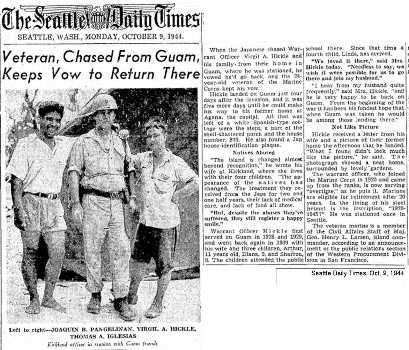The Chamorro people have a history of having a high rate of military service per capita. According to the Seattle P.I., in 1919 on Guam:
“There [were] 1,000 militiamen, the government supplying guns and ammunition and the regular khaki uniform of the United States army. Seven per cent of Guam’s population is in the militia, at which rate, if we of the mainland kept up with the Chamorros, we should have an army of 7,000,000.”
Perhaps one of the most compelling reasons prior to World War II for the Chamorro people wanting to be a part of the military was to demonstrate their loyalty and patriotism to the United States in order to gain U.S. citizenship under colonization. Hindsight reveals that citizenship would not come until 52 years later that included a global war.
The impact of World War II on the Chamorro people and the Mariana Islands significantly altered much of the United States policy on national interests, strategy and military defense of its possessions. The trauma experienced first-hand by the Chamorro people during the war also altered views and became that much more of a driving force for many to join the U.S. military.
Without a doubt, some saw the U.S. military also as a vehicle of opportunity and adventure, which would likely account for a good portion of today’s Chamorro diaspora.
In addition, those military who integrated and immersed themselves into the Chamorro culture and bonded with the Chamorro people was also a likely cause of influence to join the military.
This 1944 article from the Seattle Daily Times is a photo of Joaquin B. Pangelinan, Marine Warrant Officer Virgil A. Hickle and Thomas A(nderson) Iglesias. (click on the image to view the full article)


